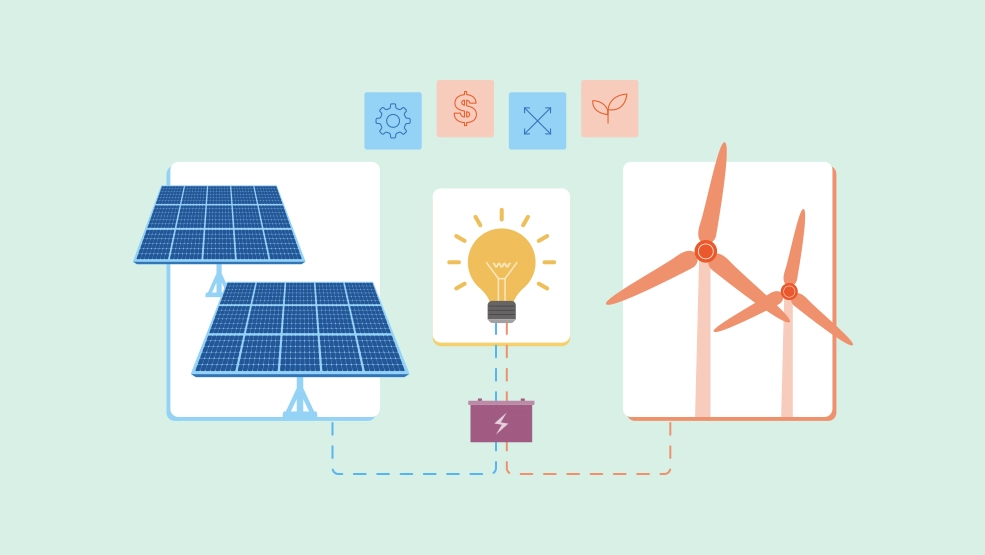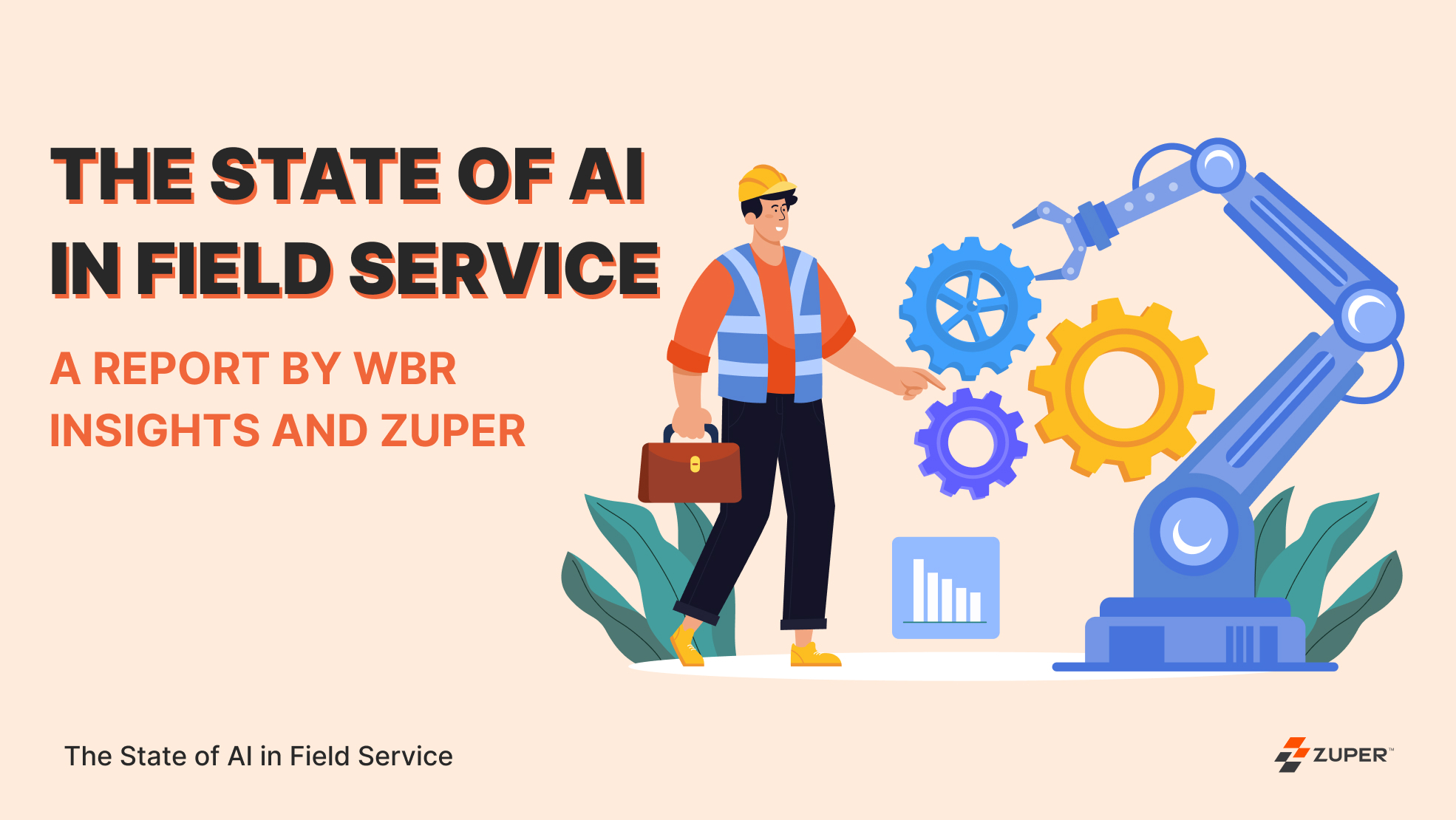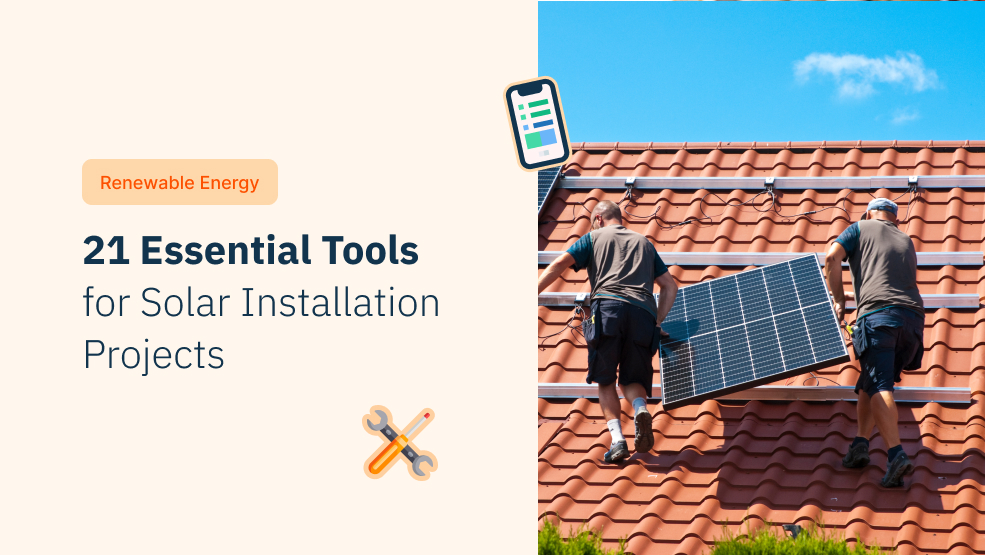Renewable energy sources like solar and wind power have witnessed significant popularity in recent years. As we shift towards alternative power sources, it is important to consider which is the best fit for your business. For that, you may have to take into account the cost-effectiveness, efficiency, scalability, and sustainability of these energy sources.
The good news is you don’t have to scour the internet for information. We have done the research and have compiled all the data into one place—the comparative analysis of the cost and efficiency of solar and wind power.
Identify the factors that impact the suitability of each technology to meet your future energy needs and make an informed decision that is sustainable for your business and environment. Whether you are a business owner or an energy enthusiast, this article is for you!
How does Solar Energy Work?
Solar power is created when the semiconductors in the solar panel absorb the photons in sunlight and transmit them into usable energy. It is as easy as that. To elaborate, energy flows through the batteries when sunlight hits the semiconductors. However, the energy is still not in a usable state. It is then connected to a generator to convert it into usable energy. From the generator, the energy gets transmitted to underground cables, substations, and electric grids.

How does Wind Energy Work?
Have you ever wondered how those majestic wind turbines generate electricity? Like solar, the principle of wind power is simple, involving a turbine, gear rotator, and generator.
When blowing wind enters the turbines, it creates an imbalance in the air pressure. Picture this: on one side of the turbine, the air pressure suddenly spikes, while on the other side, it takes a dip. This fluctuation in air pressure sets in motion a powerful force known as the aerodynamic force.
The energy is incredibly strong at this stage and would wreak havoc if directly linked to a generator. Hence, the force is coupled to a gear rotator which is then connected to the generator. From the generator, energy gets transmitted to underground cables, substations, and electric grids.
The Efficiency of Solar and Wind Power
We are not pros in physics, but let’s try to understand the concept of solar and wind power efficiency. Say you require an energy supply of 686000 kWh per month and plan to set up a wind turbine or solar panel to meet the requirement.
How many wind turbines or solar panels should you set up to get 686000 kWh?
You need to know the energy conversion rate of solar or wind power to find it. What is an energy conversion? Energy conversion estimates the ratio of energy input and energy output. In simple terms, it calculates the amount of useful power that can be obtained from a specific amount of non-usable energies, like wind and solar (Calculate the energy conversion for your business).
A study by the International Renewable Energy Agency (IRENA) found that wind turbines generate 59.3% of the energy the wind captures. In comparison, solar panels turn out only 23% of the energy sunlight supplies them. It means wind power is more efficient than solar.
Factors Affecting the Efficiency of Solar and Wind Power
Various factors influence the efficiency of solar and wind power. Take climatic conditions, for example; if you have more sunlight and no wind in your locality, there is no gain in using wind turbines, which is supposed to be the most efficient.
Wind speed and solar irradiance are the two factors that define the efficiency of solar and wind power. That means everything boils down to your geographical location. Hence, depending on the feasibility of the area, you can choose between the best ones. So, always inspect the locality and look at the factors that affect the efficiency of solar and wind power before choosing the right fit for your business.

Energy costs of solar and wind power
Energy costs of solar and wind power are determined by three distinct factors.
- Geographical location
- Local Incentives
- Upfront and ongoing
Solar panels and wind turbine installation costs vary across different geographical locations pertaining to the amount of power generated by the sun and wind speed. The closer you are to the equator, the more sunlight you will receive. Similarly, the closer you are to the water bodies, the more wind you will receive. Hence, areas located near these places will cost less than the other areas.
Additionally, local incentives in the installation area can also affect energy costs. There are a lot of local incentives and net-metered programs available in the US for solar and wind power. You can check them out here.
Finally, the upfront cost of setting up a solar panel is higher than the ongoing cost because solar panels have a lifetime of 30 years. Their maintenance work involves cleaning the batteries only. So, the maintenance cost is less.
Considering the same for wind turbines, the upfront and the ongoing cost of wind turbines are both higher. The manufacturing products of wind turbines are expensive, and it does not stop there. Wind turbines have to be maintained regularly. If there are any faults, the replacement of parts costs a fortune.
Let’s understand the manufacturing process of solar energy and wind power to denote their scalability for your business.
Solar Panels

The manufacturing process of solar panels is cost-effective. They use 90% recyclable materials like silicone, glass sheets, metals, wires, and cells. Once installed, the solar panel will last 30 years which is good news.
After 30 years, you can either recycle it or dispose of it. That’s pretty impressive since 90% of the materials used in solar panels are recyclable. In its initial years on the market, batteries used in solar panels were expensive. But now, cheaper alternatives to PV cells have been found.
We can arrive at the conclusion that solar panels are the better option for an affordable form of generating power. The only downside of the solar panel installation is its energy storage capacity. The energy-storing ability of solar panels is expensive, and depending on the batteries used, the maintenance process can also get complicated.
If the panel is made of lithium cells, you have no problem there. If lead batteries are used, they need to be adequately maintained at a water level (distilled water), and lead batteries have toxic acids to handle.
Otherwise, they are cheaper and more convenient. They don’t require a new place to be installed. They can be easily fixed on the roof, parking lot, and any area that receives sunlight. If you are ready to harness solar power, you must be interested in our blog “10 Solar Marketing Strategies You Can Start To Use Today”.
Wind farms

Compared with solar power, wind farms require a vast area to be installed. Its manufacturing products, such as blades, foils, and rotors, are expensive. Besides, wind farms can be set up only in areas that have high wind speeds. That makes areas near water bodies ideal for setting up wind farms.
So, offshore wind farms are the most effective compared to the onshore. But setting up an offshore wind farm and transmitting power to substations and grids is more than just feasible as opposed to solar.
Environmental Impact of Solar Energy and Wind Power
Are renewable sources of energy free of hazards?
If you say “No,” then it is time to know about the dark side of solar and wind power.
The most significant advantage of solar and wind power is less consumption of Co2, and they don’t require water for cooling. They are far better than fossil fuel power plants in the emission of Co2. And yes, they are replenishable, plentiful, and cheaper. But converting them into electricity is not a clean and green process. They carry many hazards to the environment.
To begin with, manufacturing solar panels and wind turbines to generate power involves heavy metals and chemicals to clean the semiconductors used in them. The worst is their disposal in landfills exposing the land and the surroundings to dangerous heavy metals. It could pollute underground water and lead to life-threatening health issues in humans.

Shift to renewable energy sources
In conclusion, it is crystal clear that solar and wind power have taken the lead as the superior and safer alternatives to fossil fuel power plants. If you are a business owner seeking to reduce energy costs and shield your enterprise from the unpredictable swings of the energy market, you must shift to solar and wind power.
That said, you cannot overlook the potential dangers associated with these energy sources. It is crucial to realize that both solar and wind power have their own set of strengths and weaknesses. We believe that we have made it easier for you to determine the right energy source for your business. If you still have any doubts, feel free to ask them in the comments below.
Would you like to start a solar panel business?









